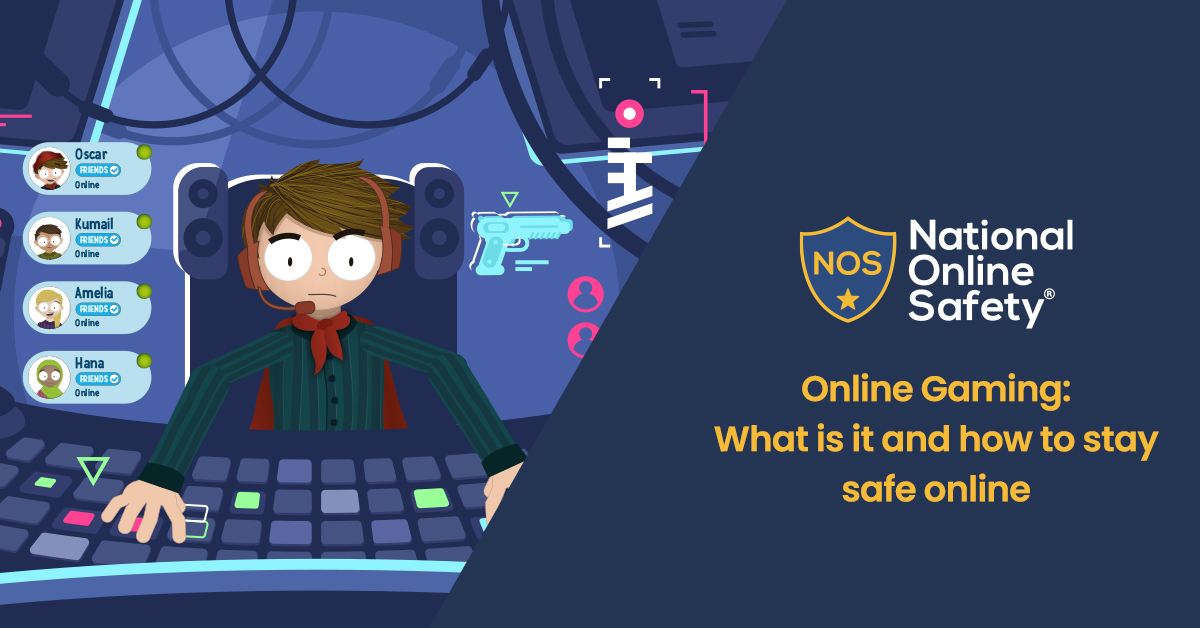
Okay, here is an article about fun and safe online games, approximately 1000 words long, written in English.

Navigating the Digital Playground: Finding Fun and Safe Online Games
In today’s hyper-connected world, online games have become a ubiquitous form of entertainment, social interaction, and even learning. From complex multiplayer universes to simple puzzle apps, the digital landscape offers an almost endless array of experiences. The appeal is undeniable: online games provide challenges, foster creativity, connect friends across distances, and offer a vibrant escape from the everyday.
However, the digital realm, like any playground, comes with its own set of potential hazards. Concerns about online safety – from exposure to inappropriate content and interactions with strangers to cyberbullying and excessive spending – are valid and widely shared among parents, educators, and even players themselves. The key question then becomes: How can we fully embrace the fun and benefits of online gaming while ensuring a safe and positive experience?
The good news is that fun and safety are not mutually exclusive in the world of online games. By understanding the landscape, knowing what to look for, and implementing smart strategies, players of all ages, and especially families, can navigate the digital playground with confidence and joy.
The Irresistible Pull of Online Gaming
Before diving into safety, it’s worth appreciating why online games are so popular.
- Social Connection: Many games are designed for multiplayer interaction, allowing friends to team up, compete, and communicate in real-time. This is particularly valuable in an age where physical proximity isn’t always possible.
- Challenge and Achievement: Overcoming obstacles, solving puzzles, mastering skills, and achieving goals within a game provides a strong sense of accomplishment and can be highly motivating.
- Creativity and Exploration: Games like Minecraft or Roblox empower players to build worlds, design characters, and create their own experiences, fostering imagination and digital literacy.
- Stress Relief and Entertainment: Sometimes, you just want to unwind and have fun. Online games offer a convenient and engaging way to relax and be entertained.
- Learning Opportunities: Many games incorporate educational elements, improving problem-solving skills, strategic thinking, reaction time, and even historical or scientific knowledge.
Addressing the Safety Concerns

While the benefits are clear, it’s crucial to be aware of the potential risks:
- Interacting with Strangers: Multiplayer games often involve communication with people you don’t know, which can expose players to predators, cyberbullies, or inappropriate language.
- Inappropriate Content: While developers try to moderate, offensive language, images, or themes can sometimes slip through, especially in games with user-generated content or open chat features.
- Cyberbullying and Harassment: Online anonymity can sometimes embolden individuals to engage in bullying or harassing behavior towards other players.
- Scams and Phishing: Players can be targeted with attempts to steal personal information, account details, or in-game items through deceptive links or messages.
- Excessive Spending (Microtransactions): Many free-to-play games rely on in-game purchases (loot boxes, cosmetic items, power-ups), which can lead to unplanned or excessive spending, especially if not properly managed.
- Privacy Issues: Games collect data about players. Understanding privacy policies and limiting shared information is important.
- Addiction/Excessive Screen Time: While not unique to online games, their engaging nature can sometimes lead to difficulties in managing play time, impacting other aspects of life like school, sleep, and physical activity.

What Makes an Online Game "Safe"?
Not all online games are created equal when it comes to safety features and practices. Here’s what to look for:
- Robust Moderation: Games that actively monitor chat, user-generated content, and player behavior, with clear rules and systems for reporting violations.
- Strong Privacy Policies: Transparent policies that clearly state what data is collected, how it’s used, and how it’s protected. Look for options to control your data.
- Effective Parental Controls: Features that allow parents or guardians to manage spending, restrict chat, limit play time, filter content, and monitor activity. These are crucial for younger players.
- Age-Appropriate Design and Content: Games that are specifically designed for certain age groups, with content, themes, and interactions suitable for that demographic. Rating systems (like ESRB or PEGI) are helpful guides.
- Opt-Out or Restricted Communication: Games that allow players (or parents) to disable or limit chat functions, especially with strangers.
- Transparent Monetization: Clear information about in-game purchases, probabilities (for loot boxes), and easy ways to track or limit spending.
- Secure Account Management: Features like two-factor authentication to protect accounts from hacking.
Finding the Fun and Safe Games
So, how do you discover games that tick both the "fun" and "safe" boxes?
- Do Your Research: Don’t just download the first popular game you see. Look up reviews from reputable sources, check age ratings carefully, and read descriptions thoroughly.
- Check the Platform/Developer: Games from well-known, reputable developers and platforms are often more likely to have invested in safety features and moderation. Educational game platforms, for instance, often prioritize safety.
- Read the Fine Print (or at least the summary): Before signing up or downloading, glance at the privacy policy and terms of service, especially concerning data collection and user conduct.
- Look for Safety Features: Actively seek out information about the game’s moderation policies, chat options, and parental controls. If these aren’t easily found, it might be a red flag.
- Start with Curated Environments: For younger children, begin with platforms or games specifically designed for kids, which often have stricter controls and curated content.
- Talk to Other Parents/Players: Get recommendations from people you trust who have experience with specific games.
While it’s difficult to list all safe games (as the landscape changes rapidly), certain types of games and platforms tend to prioritize safety:
- Educational Game Platforms: Websites and apps designed for learning (like ABCmouse, Prodigy, or certain sections of educational publishers’ sites) often have closed communities and strictly moderated content.
- Cooperative Puzzle or Adventure Games: Games focused on solving problems together with limited or structured communication.
- Games with Strong Single-Player Modes: While still online for updates or features, games that offer a rich single-player experience reduce the reliance on interacting with strangers.
- Platforms with Dedicated "Kids" or "Family" Modes: Some larger platforms or games offer segregated areas with enhanced safety features.
Tips for Players and Parents/Guardians
Finding safe games is only part of the equation; practicing safe habits while playing is equally important.
For Players:
- Protect Personal Information: Never share your real name, age, address, school, phone number, or passwords with anyone online, even if they seem friendly.
- Use Strong Passphrases: Create unique, complex passwords for your gaming accounts.
- Be Mindful of Chat: Think before you type. Avoid using inappropriate language or sharing sensitive information.
- Report Problems: If someone is being mean, asking uncomfortable questions, or you see something inappropriate, use the game’s reporting tools and tell a trusted adult.
- Be Kind: Treat others with respect, as you would in person.
- Take Breaks: Remember to step away from the screen, get some physical activity, and engage in other hobbies.
- Don’t Click Suspicious Links: Be wary of links sent through in-game chat or messages, especially if they promise free items or currency.
For Parents/Guardians:
- Talk Openly: Have ongoing conversations with your children about their online gaming experiences. Ask what games they’re playing, who they’re playing with, and how it makes them feel.
- Play Together: Join your child in their games. This gives you insight into the game’s environment, community, and safety features, and it’s a great bonding opportunity.
- Use Parental Controls: Familiarize yourself with and utilize the safety settings available on consoles, PCs, mobile devices, and within the games themselves.
- Set Clear Boundaries: Establish rules about play time, spending limits (and how purchases work), and appropriate behavior.
- Know Who They’re Playing With: Encourage them to play primarily with friends they know in real life. If they play with others, understand the communication features and monitoring options.
- Educate, Don’t Just Restrict: Explain why certain rules or precautions are necessary (e.g., why sharing personal info is dangerous). Empower them to make safe choices independently.
- Keep Devices in Common Areas: For younger players, having gaming devices in a family room makes it easier to supervise activity.
- Stay Informed: The online world changes rapidly. Keep up-to-date on the games your children are interested in and the potential risks involved.
The Balancing Act: Fun, Safety, and Healthy Habits
Ultimately, enjoying online games safely is about finding a balance. It involves selecting games that are designed with safety in mind, utilizing available tools and settings, and fostering open communication and responsible habits.
Online gaming offers incredible opportunities for fun, learning, and connection. By approaching it with awareness and proactive strategies, families can unlock these benefits while effectively mitigating the risks. The digital playground can indeed be a place of excitement and growth, provided we know how to navigate it safely.








